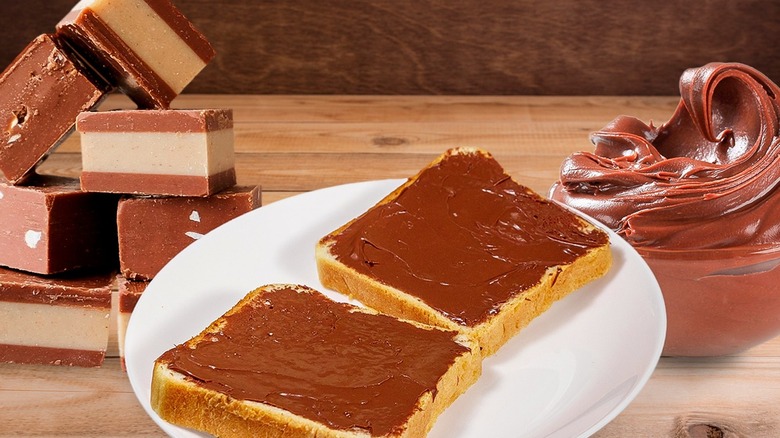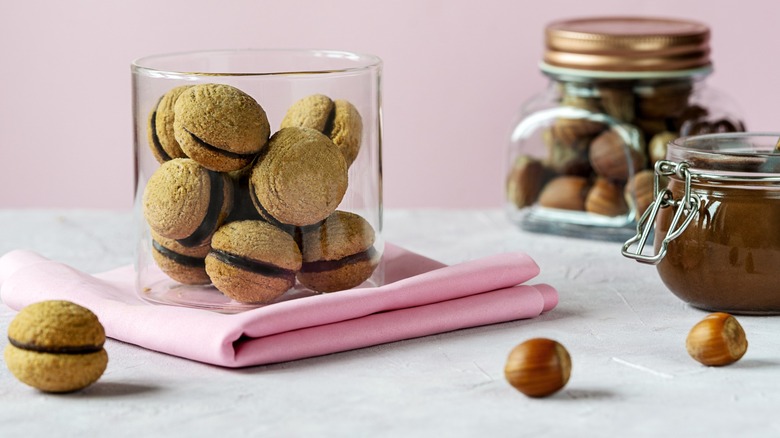Gianduja Vs Nutella: The Difference Between These 2 Hazelnut Delights
The world nurtures a long-lasting love affair with Nutella, the creamy hazelnut and cocoa spread born over 70 years ago in the heart of Italy. It's part of the Ferrero family of chocolate brand royalty, the maker of those gold-wrapped Ferrero Rocher truffles we share on special occasions. What's sometimes overlooked is that the velvety filling inside those fancy chocolate treats is actually a version of the same Nutella we spread on everything from breakfast toast to crepes, stir into baked goods, and slide into the centers of croissants, macaroons, and stuffed French toast. You've likely also seen it spooned over ice cream or fresh fruit, and there's even a Nutella ice pops recipe.
With all the Nutella devotion, it's surprising to learn that a lesser known but equally tasty hazelnut paste rests unassumingly on the sidelines. But it has very similar roots and is considered superior to Nutella in many ways. It's called Gianduja – sometimes spelled as Gianduia – and it's closely tied to the chocolate-making region of Turin, Italy. Before Nutella became a spread, it had a much different composition. It was shaped like soft chocolate bread, and was called Giandujot. In that sense, the present-day Gianduja paste is considered an ancestor of Nutella. How these two hazelnut delights differ today is a matter of taste and discernment.
Gianduja contains a higher percentage of hazelnuts
With the wildly prolific consumption of Nutella across the globe, its counterpart, Gianduja, is best explained by how it compares to Nutella. In some ways, the differences are subtle, while others become more obvious. The easiest characteristic to differentiate is texture. Gianduja is historically more dense, resembling a paste rather than a spread, which suits its original intended use as a cake or pastry filling. However, many of today's chocolate purveyors do sell it in jars and make it creamier to resemble Nutella. It also appears in many fancy chocolate ice creams.
The flavors of the two Italian chocolate products can at first-taste seem similar, but differing ingredients impart underlying effects. Though Gianduja is denser, it generally carries a gentler tasting profile. Some attribute this to the purity of components, in some cases consisting only of hazelnuts, cocoa, and sugar. High hazelnut percentages of near 50% are one of the factors that make Gianduja chocolate unique in today's marketplace. Nutella, on the other hand, uses a smaller hazelnut percentage (around 13%), complemented by additional ingredients such as skimmed milk powder, artificial vanillin flavoring, lecithin, and palm oil.
Ferraro explains that its high-quality palm oil is what forms Nutella's creamy texture, with the oil coming from fresh-pressed tropical palm fruits. The pure ingredients in many Gianduja spreads, along with its higher hazelnut percentages, make it considerably more expensive than Nutella. It's less commercialized, but still readily available through online vendors, often being produced in Italy but distributed stateside.

